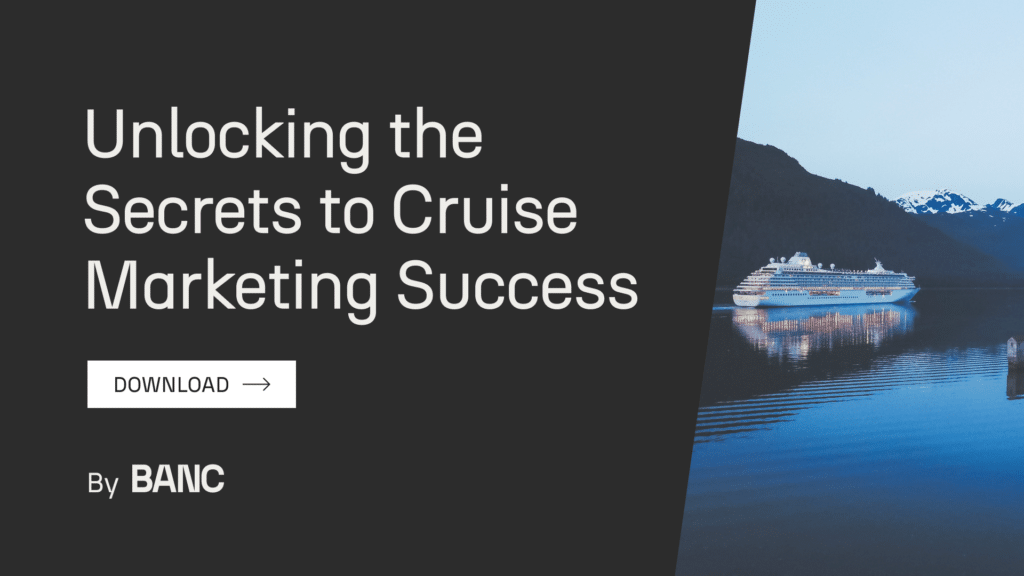Cruise Industry Insight: Paid vs Organic Traffic Split
Paid and organic traffic both have the same end goal in their sights: to drive traffic to your business’ website. They’re also both, of course, effective ways of converting that traffic. But the ways they go about achieving these results are where they differ. What’s more, you don’t have to pick and choose between the two – both approaches have a place in your marketing strategy.
Through the lens of the cruise industry, we’ll run through the difference between organic and paid traffic, including what the recommended split between the two is, along with a few of our own insights into how cruise brands can improve their paid and organic traffic in the future.
Quick Links
- What is paid traffic?
- What is organic traffic?
- What is a ‘healthy’ split in traffic?
- Paid and organic traffic in the cruise industry
- Download our Cruise Industry Marketing & Trends Research Document
What is paid traffic?
Paid traffic refers to any traffic that comes to your website through paid advertising like PPC ads, social media ads and display ads. It’s pricey, but it’s an effective way to target people looking for specific keywords, or to target certain people based on demographics, interests and behaviours.
What is organic traffic?
Organic traffic, meanwhile, is any traffic your website receives through inbound marketing activities such as writing a blog, using organic social posts and search engine optimisation. With these activities, you haven’t directly paid to convince customers to visit your site.
What is a ‘healthy’ split in traffic?
As we hinted at up top, it’s a good idea to use both tactics in your marketing mix. But like any good recipe, you need to get the measurements right. The rule of thumb suggests that about 70% of your website’s traffic should be organic traffic, with the other 30% coming from paid search and ads.
What’s the reason for this split?
This isn’t just any old split picked out at random. There’s a good reason why digital marketers have landed on these figures, and it’s because organic traffic tends to send higher quality leads to your site.
These natural scenarios – where a user has found what they’re looking for, yes, organically – generally translate to lower bounce rates, more time on site and higher conversion rates. There’s more meaning attached to organic interactions, and users are more likely to view you as transparent, trustworthy and reliable.
Another reason the split is weighted more to organic traffic? Paid traffic is an expensive thing to pursue. In the long-term, investing in your organic traffic can provide a much higher return for a much lower up-front cost. Don’t be fooled into thinking it’s working just because the return is instant. The time you spend investing in your organic traffic generally means greater long-term performance.
Paid and organic traffic in the cruise industry
What is the Paid vs. Organic Traffic split in the cruise industry?

Why do we think this is the split?
The split you can see above comes from our recent research paper on competitor benchmarking within the cruise industry – paid and organic traffic was one of the many things we paid attention to, but there were all sorts of other insights we uncovered too (more on this later).
So why do we reckon the cruise industry splits its paid and organic traffic this way? Well for one, it isn’t far off the recommended 70/30 split we mentioned above. In our data, only one cruise brand has a higher volume of paid traffic compared to its organic traffic.
Meanwhile, there’s a handful of cruise liner brands whose organic traffic is nearer the 60% mark. These brands aren’t exactly small fish – so they’ll have heftier budgets than most to throw at their paid activity.
On the whole, however, twelve out of the eighteen brands we looked at in our research have organic traffic splits of over 70%, which accounts for the overall split in our research.
How can the cruise industry improve paid traffic?
If you’re a cruise business looking to improve your paid traffic performance, then we’d recommend trying the following tips…
- The cruise industry is a saturated market. If you’re using very broad keywords (like cruises) then you probably won’t convert. Go through your AdWords and get rid of these broad and costly keywords.
- Then do the opposite: go specific. Target your ads to people who are looking for cruises to specific destinations or for specific demographics (cruises for kids, adults-only cruises). This will increase your chances of increasing conversions, reducing wasted budget and strengthening your profit margins.
- Adjust your ad copy when you need to. Scope out the ads that are performing best and cut out the ones that aren’t. Across the good ones, what makes them stand out? Do you spot any trends? Replicate the successes in your new ad copy, let them gather impressions over the weeks and then come back to them. Repeat as needed.
- Don’t forget to add CTAs to your ads. The “call to action” gets users to act – and fast if you use words like today or now (which you should). Users want to be guided on their journey, and CTAs can do a lot of the heavy lifting in this regard.
- You’ve got to spend money to make money – or in this case, bring in leads. If you’re chewing through small budgets before the day’s end, but you still have a good ROI, then try increasing them. if you’re seeing a low ROI, then cut or pause the pricey keywords and campaigns. When your ROI starts to improve, then you can increase your budget.
- Sometimes, the problem might not be with your paid campaigns, it’s with your landing pages. If your landing pages are unclear, cluttered, filled with outdated imagery or make users sift through 100s of cruises, then they’ll leave the page in no time at all. Make sure you’re doing everything you can to optimise the experience for them after they’ve clicked an ad.
How can the cruise industry improve organic traffic?
Even if you don’t have the budget to put behind your paid activity like the larger cruise lines can, you can still step up your organic game in the following ways.
- Put the user at the centre of your strategy. Focus on creating inspirational, informational content that appeals to their needs and various touchpoints along their journey, from initial research up to booking the cruise itself. Adding some technical SEO muscle can then give these content efforts some added competitiveness.
- Try refining your approach to competitors. It can be tempting to replicate the heavy hitters in your industry, but look towards your closest competitors instead. This approach will help you understand what needs to be done to compete organically in your sphere. Then you can move onto your more aspirational competitors.
- If you’re selling cruises from established brands, then you can definitely use their name to your advantage. So, if your cruise booking website sells Royal Caribbean cruises, creating relevant, quality content around Royal Caribbean can reach those who are loyal to the name.
Download our Cruise Industry Marketing & Trends Research Document

To uncover all of our cruise industry insights, including more in-depth info about paid and organic traffic across the market, download our comprehensive research paper here and start optimising your digital marketing activity today.
If your strategy needs some extra steering, we’ll help you out of those choppy waters and get you sailing towards success instead. See how our team can gain you more customers or give us a call on 0345 459 0558 for more info.



